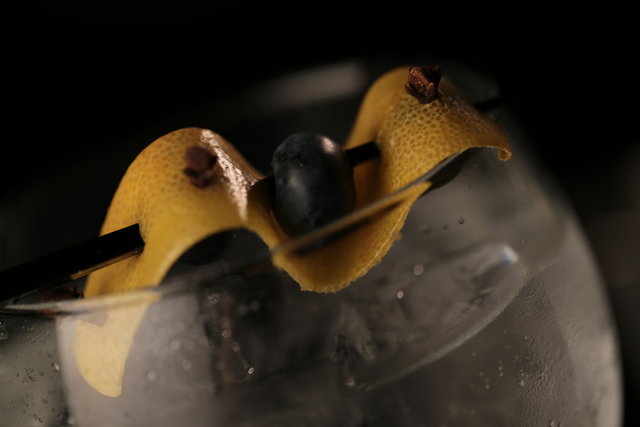WE WISH YOU
A SPICY CHRISTMAS!
CHRISTMAS SPICES

Christmas is one of the most important seasonal events for the food industry. This is reflected in our business media, which expounds stories of festive offerings, seasonal ingredients and holiday treats. Recent popular examples include Nestlé’s line-up of Starbucks Holiday Coffees and Favourites products, which have been rolling out on store shelves globally for the past couple of months. Closer to home for European readers, Dina Foods’s Christmas offerings this year range from baklawa to beetroot falafel, chocolate-dipped dates and cocktail pittas.
Launches such as these go some way to demonstrating the tremendous sensory indulgence with which Christmas is commonly associated. For many people across the world, Christmas is a time for gathering friends and family, exchanging gifts, enjoying a drink (or two?) and eating… a lot. Our olfactory systems are treated to familiar festive fragrances and flavours (try saying that after those drinks we just mentioned!) that trigger childhood memories of magic, excitement and wonder. At this time of year, traditional Christmas flavours and aromas will never be far away.
Cloves, gingerbread, cinnamon, star anise, nutmeg, candy canes, cranberries, mulled wine, oranges, satsumas, fruitcake and mince pies are among many of the delicious flavours that have long been associated with Christmas, and they will be found in most kitchens this December 25th, as they are every year.
Rachel de Caen, Founder and Director of Royal Mash Vintage Vodka (also a Michelin star trained chef and a Masterchef finalist), told Food Horizons that, “No matter how inventive people are in the kitchen throughout the year, for many Christmas is a time to return to traditional flavours and scents time and time again… It is a time when we can find comfort in things that help us recall fond memories of those we love, and a generally joyous time of year.”
However, if you would kindly permit me to turn that old proverb on its head, the more things stay the same, the more they change. Modern consumers may be nostalgic for flavours of their youth, but current trends are putting a new slant on their demands, giving rise to potential shifts in product development and marketing.
TRADITIONS
Another growing trend for 2020 has been an increase in inventive combinations of contemporary Christmas flavours with alcoholic drinks.
Foxdenton Christmas Liqueur is made using their plum gin with the addition of Christmas spices, and is described as tasting “like Christmas in a glass”, and Brockmans Gin has created several festive drinks using garnish such as cloves and orange (pictured). Meanwhile, the team at Old Curiosity teamed up with Great British Bake Off 2018 finalist Ruby Bhogal to create a new Old Curiosity Christmas Gin that combines the flavours of ginger, cinnamon and cardamom. Marks & Spencer’s clementine gin liqueur is another great example, back this year in light-up bottles featuring 23-carat edible gold leaf for a showstopping sparkly effect!
Royal Mash Vintage Vodka’s Rachel de Caen commented on this trend, saying “My thoughts turn to creating cocktails that make the most of our delicious spirit whilst also – if you pardon the pun – evoking the spirit of Christmas. So for me, cocktails that involve festive luxuries such as champagne, traditional Christmassy spices and mixers, and pairing these drinks with appropriate foods, will be front of mind.”
SEASONAL SNIFTER

Brockmans Gin has created several festive drinks using garnish such as cloves and orange.
(Image by Brockmans Gin)
These wonderful flavourings have been part of our cuisine for hundreds of years. How else could something like cardamom – hailing from tropical India, Guatemala, Nepal and South Asia – become widely known as a ‘Scandinavian flavour?’ Our traditional Christmas spices are only traditional because, for hundreds of years before us, traders traversed a network of sea routes stretching from the west coast of Japan, through the islands of Indonesia, around India, across the Middle East and through the Mediterranean to Europe.
Obviously, with modern travel and transport options, those sea routes are no longer essential to the spice trade. Yet changes in the spice network have happened more recently than you might think.
“As recently as the 1980s, if you wanted to buy nutmeg – which is primarily grown in Indonesia – you would first think of talking to a trader in the Netherlands,” explained Hugo Bovill, an international ingredients hunter who is well known for his expertise in flavour and fragrance ingredients. “Until 30 or 40 years ago, the spice trade was still routed via former colonial powers. It’s only in recent decades that the internet, in particular, has opened up that market.”
Sri Lanka, Indonesia, Vietnam, India and China are still key suppliers. Specifically thinking about our Christmas spices, Mr Bovill explained, cloves come primarily from Madagascar and Indonesia (and to a lesser extent, Zanzibar), most of our ginger comes from China, and star anise comes mainly from China and Vietnam. The cinnamon market is complex due to the number of different varieties available, but it is native to Sri Lanka, China and Vietnam. The modern value chain stretches from main production hubs in these countries to an international spice trade network.
SPICY SOURCES
However, despite growing demand, traditional spice farmers have been turning to more profitable commodities. This is disastrous not only for the spice trade, but also for environmental calls for greater biodiversity and less agricultural chemical load. It has been recognised that the move away from spice farming is most commonly due to a lack of financial sustainability. Therefore, the past couple of years has seen the launch of several initiatives to ensure that spice farming is sustainable for the farmers. It is also broadly recognised that spice growing practices need to be safe and environmentally friendly.
One of the most well-known programmes is the Sustainable Spices Initiative (SSI), which aims to connect national and international food processors, blenders, brands, retailers and non-governmental organizations (NGOs) to transform the sector sustainably. Ultimately, the SSI’s goal is to transform the mainstream spices sector, thereby securing future sourcing and stimulating economic growth in producing countries.
The special flavours that characterize your Christmas have been travelling to us from spice farms in the Orient for dozens of generations. Initiatives such as the SSI, and others like it, will help to ensure that Christmas spices, and the magical memories they evoke, are available to future generations too.
From all of us at Nutra Horizons, we wish you a spicy Christmas, and a happy new year!
FESTIVE FUTURES
A great example is the recent global trend for ‘multifunctional natural flavours’ that can provide health benefits alongside great taste. Christmas offers huge potential here, as food and drink manufacturers have been making the most of botanical extracts, aromatic spices and Scandinavian-style flavours (e.g. cardamom, dill). It aligns with a huge trend for ‘permissive indulgence’, which I like to think means that this Christmas we can be both naughty and nice.
The characteristic smell of cloves comes from a chemical called eugenol, while the aroma and flavour of cinnamon come from the compound cinnamaldehyde. Fresh ginger gets its pungency and fragrance from the compound gingerol. These compounds, and the Christmas spices themselves, are great examples of multifunctional natural flavours, offering a seasonal gift of well-being and health. For example:
- Cloves contain a variety of flavonoids, including kaempferol and rhamnetin, which contribute to the spice’s anti-inflammatory properties. Eugenol, the primary component of the clove's volatile oils, also functions as an anti-inflammatory substance. Cloves are also a good source of manganese, iron, magnesium, calcium and vitamin K.
- The oil produced from star anise contains thymol, terpineol and anethole, and can be used for treating coughs and influenza. Star anise is also said to help improve digestion, alleviate cramps and reduce nausea.
- Cinnamon has been described as one of the most delicious and healthiest spices on the planet. At the right doses, it can lower blood sugar levels, reduce heart disease risk factors and has a range of other impressive health benefits.
- Ginger is loaded with antioxidants – compounds that prevent stress and damage to your body's DNA. They may help your body fight off chronic diseases like high blood pressure, heart and lung diseases, and promote healthy aging.
NATURAL BENEFITS
"Food manufacturers have been making the most of botanical extracts, aromatic spices and Scandinavian-style flavours"
Image by PublicDomainPictures from Pixabay
ABOUT THE AUTHOR
Sarah Harding, PhD, is a specialist in scientific communications, with 25 years of experience in the speciality chemicals and pharmaceutical sectors.






